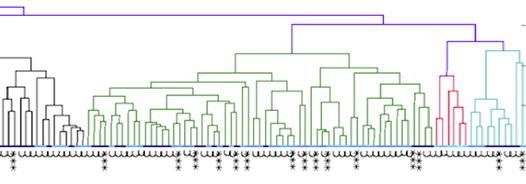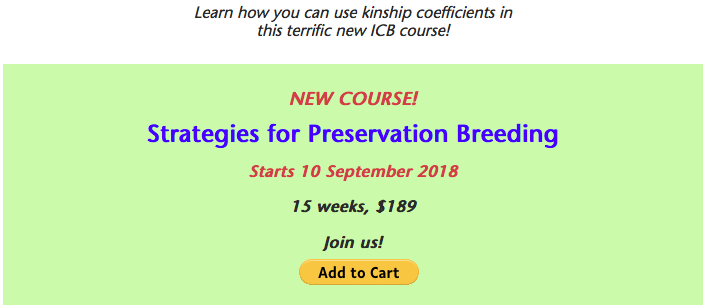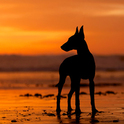Many disorders, however, are not the result of a single mutation. For these, there might be dozens or even hundreds of genes involved. Creation of a test that will identify an affected dog with no symptoms, one likely to produce affected offspring, is not likely to happen for most of these. This is a huge problem for breeders, because many of these diseases, like cancer, epilepsy, autoimmune dysfunction are very serious and becoming more and more common. Yet they do seem to run in related dogs, so we know genetics is important. How can we manage these diseases if we don't have a DNA test? We can use kinship coefficients. Watch this.
This is a dendrogram constructed using kinship coefficients computed from DNA data for 211 Irish Wolfhounds. The upper figure is the right to the right blown up so you can see a bit easier, and the lower chart is the entire dendrogram.
Let's take a little tour of the lower chart. You can see that the population of dogs has been separated into two smaller groups at the arrow labeled "A". If we follow the branch that comes off point A to the right, we come to a second branch at the arrow B that creates two subgroups. If we follow that branch at B to the left, we come to branch C that again splits the dogs into two groups. You can see now that is called a dendrogram because it is a picture of a structure that branches like a tree.
Dendrograms are a bit tricky to read properly and getting good at it takes some practice. You need to remember that branches can rotate around any branching point. So for instance, the very top branch that divides at A can be rotated around the junction at A so that the green group on the far left is moved to the far right to sit nest to the turquoise group. Clearly, that green group is not most closely related to the red group that was right next to it at when it was at the left end of the chart. For that matter, we can rotate the two groups on the far right (at arrow D) so the green group is now right next to the red group. So there are actually many different ways to arrange the clusters that don't change their relationships to each other. This is because relatedness is indicated by the length of the lines that connect groups or dogs. Dogs connected by very short lines are closely related, and dogs that are more distantly related are connected by longer lines. When we swivel groups around branching points, the length of the connecting lines is not changed so the information about relatedness is not changed. (Check out How to read a dendrogram)
One caveat about dendrograms from kinship coefficients. The cluster analysis uses the information for all dogs in a sample population to construct a tree that is most likely to reflect their true relationship. If more dogs are added to the population, the groups might be sorted differently because the relationships among them are changed. So to be useful, data for kinship should be updated regularly and needs to accurately represent the genetic breadth of the population of interest. This would be true
ICB's online courses
***************************************
Visit our Facebook Groups
ICB Institute of Canine Biology
...the latest canine news and research
ICB Breeding for the Future
...the science of animal breeding




